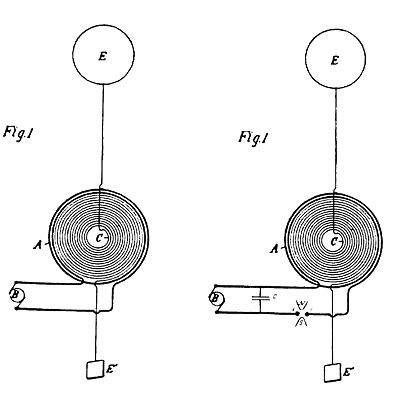

With heavy investments in the AC system, there was little interest in supporting the more noble, but less profitable radiant system. Unfortunately, Tesla’s vision for broadcast power did not impress the financial backers of the utilities industry.
TESLA RADIANT ENERGY COLLECTOR PATENT FREE
Tesla’s reference to the “wheelwork of nature” is often quoted as inspiration for the modern Free Energy movement, and is consistent with the accepted theories of Quantum Electrodynamcs (QED). Is this energy static or kinetic? If static our hopes are in vain if kinetic - and this we know it is, for certain - then it is a mere question of time when men will succeed in attaching their machinery to the very wheelwork of nature. We find it in the delightful myth of Antheus, who derives power from the earth we find it among the subtle speculations of one of your splendid mathematicians, and in many hints and statements of thinkers of the present time. It has been expressed in many ways, and in many places, in the history of old and new. Men have been led to it long ago by instinct or reason. Ere many generations pass, our machinery will be driven by a power obtainable at any point of the universe. We shall have no need to transmit power at all. But such schemes are mentioned merely as possibilities. There is no doubt that with the enormous potentials obtainable by the use of high frequencies and oil insulation luminous discharges might be passed through many miles of rarefied air, and that, by thus directing discharges energy of many hundreds or thousands of horse-power, motors or lamps might be operated at considerable distances from stationary sources. While discussing the promise of “no-wire motors”, Tesla makes this remarkable assertion: Tesla expressed his vision for a radiant power system several years earlier, in his famous address to the Institution of Electrical Engineers, London, in 1892. Indeed, the answer to this mystery is not hard to find. Many believe that Tesla refers to background, environmental energy. It is an oblique reference the patents cited here do not identify the independant source of energy. In this passage, Tesla’s receiver is extracting power not from the transmitting station, but from an independant source. A condenser is used as the storage means. The method in general consists in charging a storage device with energy from an independent source, controlling the charge of the device by the action of the effects or disturbances transmitted through the natural media and coincidently using the stored energy for operating a receiver. In another method the energy stored is not, as in the previous instance, obtained from the energy of the disturbance effect transmitted from a distance, but from an independent source. 30, 1901 issue (full text appears below.) Of particular interest is this paragraph: Scientific American carried a story on Tesla’s patents in the Nov. With these new patents, Tesla was poised to revolutionize industry again with broadcast power distribution. There was a huge, expanding market for electrical power transmisson equipment. By 1901, the major utilities were heavily invested in Tesla’s AC system, and the business of electrifying America’s cities and industries was underway. Industrial applications such as beaming power to electric airships was also planned.Ī decade earlier, Tesla’s polyphase AC power system had destroyed the DC power industry, primarily because of it’s significant advantages in power transmission.


Tesla’s vision was to provide free electricity in the service of humanity. Simply erect an elevated collector, attach the ground plate and begin drawing power from a distant transmission station. Modest amounts of electric power would be available anywhere, at any time, for lighting and communications. The radiant energy system was revolutionary because it did away with wires and meters. The patents include a generalized radiant power receiving circuit, developed and optimized during his nine month stay in Colorado Springs. The system utilized “natural media” such as the atmosphere and ground to transmit power with virtually no losses.

In 1901 Nikola Tesla was granted several patents for a system of radiant energy transmission and reception.


 0 kommentar(er)
0 kommentar(er)
